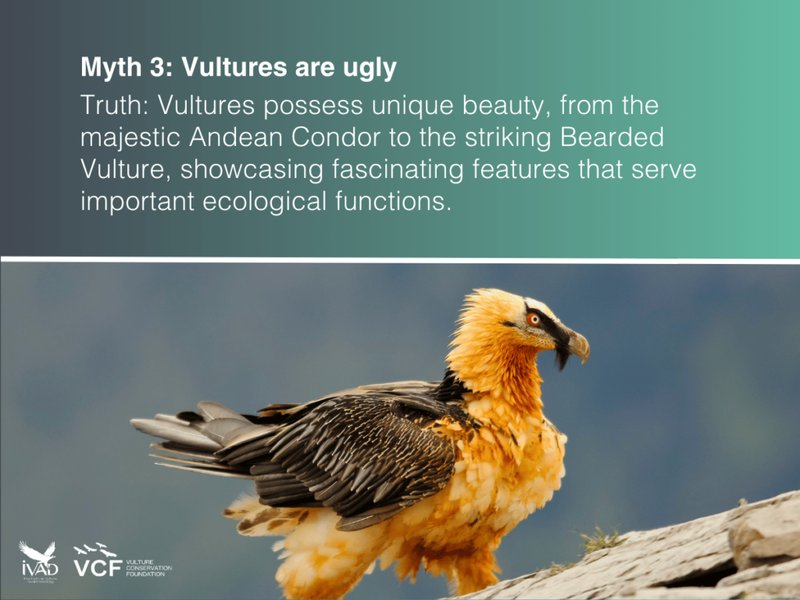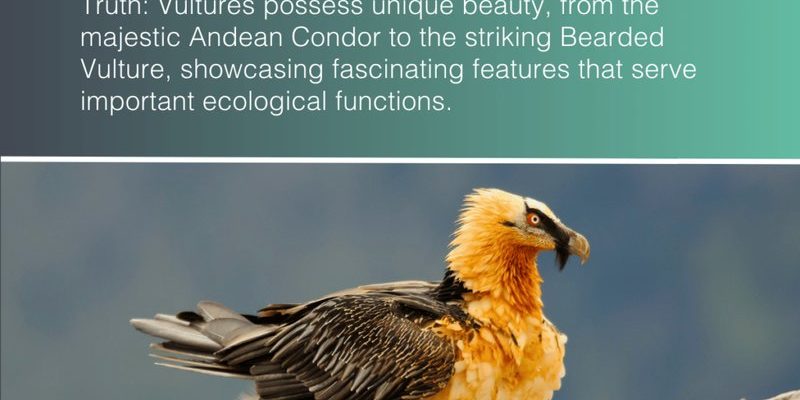
Many people envision the bearded vulture as a fearsome predator that swoops through the skies, snatching away livestock or scavenging from other animals. However, **here’s the thing**: their true dietary habits and behaviors are quite different. In this article, we’ll unpack some common myths surrounding the bearded vulture and explore what makes this bird truly special.
Myth 1: Bearded Vultures Only Eat Bones
You might have heard that bearded vultures have a bone-only diet, and that’s where the trouble begins. While it’s true that these birds have a unique way of consuming bones, they don’t solely rely on bones for nourishment.
Bearded vultures primarily feast on carrion, which can include the remains of various animals. Think of them like nature’s recyclers. They have powerful digestive systems that allow them to break down tough materials, but their diet also includes meat and other soft tissues. You could say they have a balanced diet like many of us do!
What makes them fascinating is their method of bone consumption. They drop large bones from great heights to crack them open and access the nutritious marrow inside. This behavior helps them recycle nutrients back into the ecosystem. So, while bones are a big part of their diet, they certainly don’t eat exclusively bones.
Myth 2: Bearded Vultures Are Not Social Birds
Another common idea is that bearded vultures prefer solitude and rarely interact with others of their kind. Honestly, it’s true that you might spot them soaring high in isolation, but they can actually be quite social!
When you see a bearded vulture, it may look like it’s flying solo, but they often gather in small groups. These birds communicate through different vocalizations and body language. They engage in social behaviors that can involve play, especially during breeding seasons.
It’s heartwarming to think of them sharing moments together, flying in tandem or simply hanging out on rocky ledges. These interactions are essential for their social structure and help them establish territories.
Myth 3: Bearded Vultures Are Just Like Other Vultures
Many people mistakenly lump bearded vultures in with other types of vultures, but they have distinct characteristics that set them apart. For one, their striking appearance is hard to miss. With a wingspan of up to 10 feet, they boast a stunning black-and-white plumage with a signature beard-like tuft of feathers beneath their beak.
Unlike typical scavenging vultures that often rely heavily on smell to locate carrion, bearded vultures are more visual hunters. They scan the vast landscapes for food, making their hunting style unique. This visual approach, along with their penchant for dropping bones, differentiates them in crucial ways.
Plus, their role in the ecosystem is different. While many vultures help clean up dead animals, bearded vultures play a vital part in nutrient cycling by breaking down bones, ensuring that nothing goes to waste.
Myth 4: Bearded Vultures Are Endangered Because They Are Dangerous
It’s easy to think that fearsome creatures are in jeopardy due to their intimidating reputation, but that’s not the case for bearded vultures. The truth is, their endangered status comes from habitat loss and human activities rather than any danger they pose to humans or livestock.
These majestic birds require vast, undisturbed territories to thrive, as they often inhabit remote mountainous areas. Sadly, urban development, agriculture, and other human encroachments have led to shrinking habitats. Conservation efforts are crucial to protect their habitats, but their perceived danger isn’t part of the equation.
Instead of fearing these birds, we should admire their unique adaptations and work together to ensure their survival.
Myth 5: Bearded Vultures Are Not Important to Their Ecosystems
You might think that since bearded vultures mainly eat bones, their role in the ecosystem is minimal. But let me explain why that’s far from the truth! These birds serve as vital players in maintaining the health of their ecosystems.
By consuming bones and marrow, they help recycle nutrients back into the ground, which is beneficial for the flora and fauna of their habitat. Their feeding habits can even shape the landscape over time, promoting biodiversity.
Through their actions, they contribute to the balance of life in the wild. Think of them as the unsung heroes of nature, working diligently to enhance their surroundings without much acknowledgment.
As we’ve explored together, the myths surrounding bearded vultures are not just harmless misconceptions; they can affect how we view and protect these incredible birds. By understanding the truth, we can better appreciate their role in the ecosystem and contribute to their conservation.
So, the next time you hear someone talking about bearded vultures, you’ll be armed with knowledge. You might share that they eat more than just bones, have social lives, and are essential for their habitats. Isn’t it fascinating how much there is to learn about these magnificent creatures? By keeping these truths in mind, we can foster a greater respect for the natural world and work towards a future where all species thrive together.

